 Menu
Menu
By Sharon Coon. (c) 2013 Sharon Coon (All Rights Reserved)
This work is dedicated to the memory of my son, James Lee Coon, Jr.
In 2001, The James Weldon Johnson Heritage Tour was established to preserve the legacy of Jacksonville's Native son, and his family roots in the Jacksonville community.
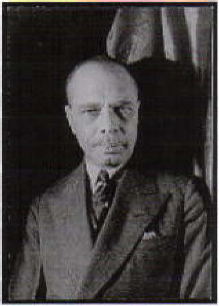 James Weldon Johnson, Jacksonville's native son was a
man of letters as a poet, novelist, journalist, educator, lawyer,
activist, diplomat, and composer. He was born on Lee Street June
17, 1871 as James William Johnson to the parents of James
Johnson, and Helen Dillet Johnson. He changed his middle name
in 1913 to Weldon. James was the second of three children's. His
father held a prominent position as a headwaiter at the St. James
Hotel. His mother, Helen was the first Black female public school
teacher in Florida. She taught at Old Stanton School on Ashley Street in Jacksonville, FL. His
mother taught both James and J. Rosamond music, and reading. Johnson parents had roots
extended the Nassau, Bahamas to New York as free middle class Blacks before moving to
Jacksonville, FL. Johnson attended Stanton segregated school, where his mother taught, until the
eight grade. He left home to attend secondary school and college at Atlanta; Ga. (now Clark
University). Johnson received his bachelor's degree in 1894 and returned to Jacksonville as
Principal of Stanton School where his mother taught.
James Weldon Johnson, Jacksonville's native son was a
man of letters as a poet, novelist, journalist, educator, lawyer,
activist, diplomat, and composer. He was born on Lee Street June
17, 1871 as James William Johnson to the parents of James
Johnson, and Helen Dillet Johnson. He changed his middle name
in 1913 to Weldon. James was the second of three children's. His
father held a prominent position as a headwaiter at the St. James
Hotel. His mother, Helen was the first Black female public school
teacher in Florida. She taught at Old Stanton School on Ashley Street in Jacksonville, FL. His
mother taught both James and J. Rosamond music, and reading. Johnson parents had roots
extended the Nassau, Bahamas to New York as free middle class Blacks before moving to
Jacksonville, FL. Johnson attended Stanton segregated school, where his mother taught, until the
eight grade. He left home to attend secondary school and college at Atlanta; Ga. (now Clark
University). Johnson received his bachelor's degree in 1894 and returned to Jacksonville as
Principal of Stanton School where his mother taught.
In 1895, Johnson established the Daily American Newspaper to educate the Black community of Jacksonville. The newspaper was a voice against racial injustice through individual effort a "self-help" position. Unfortunately, after several months with finance problems the newspaper shut down.
The first settlement in the area is Ossachite, was made over 6,000 years ago by the Timucua Indians in the vicinity of modern-day Downtown Jacksonville. Today, Downtown Jacksonville is defined on the north side of the St. Johns River to include not only the central business district, but also, the older neighborhoods of East Jacksonville, LaVilla, and Brooklyn that did not collectively become part of the City unit 1881. Jacksonville is the largest city in the State of Florida and the county seat of Duval. It is also, in terms of area, the largest city in the contiguous United States, and the 40th largest in the world. Since 1968, Jacksonville has been the largest city in land area in the neighboring United States this resulted from the consolidation of the city and county government, along with a corresponding expansion of the city limits to include almost the entire county.
However, this historic context is focused on the development of that part of Downtown Jacksonville that constituted the city limits before the 1887 expansion. Including the original 1822 plat as well as the expansions of 1832 and 1842, this area is generally defined by Hogan Creek to the east, State Street to the north, Clay Street to the west, and the St. Johns River to the south. This overview on the historical context of Downtown Jacksonville is broken into major periods that include the Colonial (1562-1821); the Territorial and Antebellum (1821-1860); the Civil War to the Twentieth Century; and the First Half of the Twentieth Century.
European explorers first arrived in 1562, when French Huguenot explorer Jean Ribault charted the St. John River. On September 20, 1565, a Spanish force attacked Fort Caroline from the nearby Spanish settlement of St. Augustine, and killed all the French soldiers defending it (except Catholics). The Spanish renamed it Fort San Mateo. After the initial destruction of Fort Caroline, St. Augustine became the most important settlement in Florida. During their first occupation of Florida (1565-1763), the Spanish government at St. Augustine made very few attempts to settle and exploit the vast territories of East Florida. Except for a chain of government missions along the Atlantic Coast and west to Apalachee, as well as a few large land grants for cattle ranching, most of their activities cemered around St. Augustine which served primarily as military outpost protecting the Spanish fleet.
Eleven land grants for cattle ranching were made along the St. Johns River. Being located on the narrowest point of the St. Johns River, the area later developed as Jacksonville was known by Native Americans as Wacca Pilatka, meaning the place of the cows crossing, later translated by the British as Cowford. Spain surrendered Florida to the British in 1763, who then gave control back to Spain in 1784. The Spanish government continued the liberal land grant policy initiated during the British Period (1763-1783). Contrary to official policy elsewhere in the Spanish Empire, the crown allowed non-Catholics to settle in order to populate and develop the vast territories of East and Florida.
It was during this period that the earliest recorded ownership and settlement of property in the LaVilla area was first documented. In 1801, John Jones received a Spanish land grant of 350 acres defined as a triangular tract-stretching north from the mouth of McCoy's Creek. This parcel was surrendered to Isaac Hendricks by the governor of Spanish East Florida in 1804, and confirmed by the land commissioners, in 1819. By the time the property was deeded as a gift to Catherine Hendricks, the wife of Isaac Hendricks, the parcel has been expanded to 500 acres bounded by McCoy's to the south, the Taylor Grant to the east, and public lands to the north and west. In 1831, the tract came under the ownership of Rebecca Jones, later the wife of Calvin Reed, who divided the property into two separate tracts. After a series of owners, both tracts came under the ownership of Reverend James McDonald, the pastor of the Baptist Church in Jacksonville.
The first permanent settlement in modem Jacksonville was settled as "Cowford" in 1791, at a narrow point in the St. Johns River where cattlemen could ford their livestock across. The Florida Territory was surrendered to the United States in 1821, and in 1822, Jacksonville's current name had come into use. On February 9, 1832, the Florida Legislative Council approved a charter for a town government led by Isaiah D. Hart and U.S. settlers.
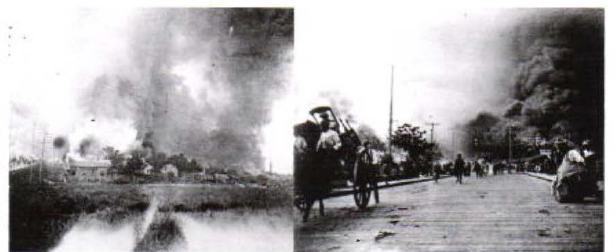
Jacksonville's Great Fire of 1901 was the largest metropolitan fire in the American South. The fire began on May 3, 1901 with a spark from a kitchen fire at lunchtime, which ignited piles of drying Spanish moss at a nearby mattress factory. Located at Davis and Beaver streets, the factory fire soon spread to most of the downtown area. Smoke was seen as far north as Savannah, Georgia. James Weldon Johnson and his brother J. Rosamond Johnson saw the fire spreading ran through the neighborhood warning the people and providing help.
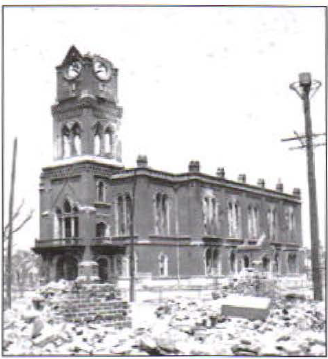 By 8:30 p.m., when the fire was brought under control, 2,368 buildings were destroyed,
10,000 people were homeless, and seven residents were dead. In all, 146 city blocks were
destroyed. The Confederate Monument in Hemming Park was one of the few city landmarks to
survive the fire. Governor William Jennings declared martial law, and sent in the state militia to
maintain order. Municipal authority was not resumed until 17 May. The city spent the next
decade rebuilding its downtown. Famed "Prairie School" architect Henry John Klutho was
brought in to design many of the city's new buildings. Out of the ashes of the fire arose buildings
such as the St. James Hotel (later the Cohen Brothers Department store) which when it opened in
1911 was one of the largest buildings in lhe nation. Today, the St. James building is fittingly
used as Jacksonville's City Hall. More than 13,000 buildings were constructed between 1901 and
1912.
By 8:30 p.m., when the fire was brought under control, 2,368 buildings were destroyed,
10,000 people were homeless, and seven residents were dead. In all, 146 city blocks were
destroyed. The Confederate Monument in Hemming Park was one of the few city landmarks to
survive the fire. Governor William Jennings declared martial law, and sent in the state militia to
maintain order. Municipal authority was not resumed until 17 May. The city spent the next
decade rebuilding its downtown. Famed "Prairie School" architect Henry John Klutho was
brought in to design many of the city's new buildings. Out of the ashes of the fire arose buildings
such as the St. James Hotel (later the Cohen Brothers Department store) which when it opened in
1911 was one of the largest buildings in lhe nation. Today, the St. James building is fittingly
used as Jacksonville's City Hall. More than 13,000 buildings were constructed between 1901 and
1912.
With the transfer of Florida back to Spain in 1784, the Spanish government continued the liberal land grant policy initiated during the British Period (1763-1783). Contrary to official policy elsewhere in the Spanish Empire, the crown allowed non-Catholics to settle in Florida. This period recorded the first document of ownership and settlement of property in the La Villa area. In 1801, John Jones received a Spanish land grant of 350 acres defined as a triangular tract-stretching north from the mouth of McCoy's Creek. In 1804, Lavilla was receded to Isaac Hendricks by the governor of Spanish, East Florida. In 1819, Land commissioners confinned La Villa. Later the time the property was deeded as a gift to Catherine Hendricks, the wife of Isaac Hendricks, the parcel has been expanded to 500 acres bounded by McCoy's Creek to the south, the Taylor Grant to the east, and public lands to the north and west. In 1831, the tract came under the ownership of Rebecca Jones, later the wife of Calvin Reed, who divided the property into two separate tracts. After a series of owners, both tracts came under the ownership of Reverend James McDonald, the pastor of the Baptist Church in Jacksonville.
From 1861 through 1867, during the Civil War years, LaVilla was an independent town with a population of 3,000 residents and African Americans held senior positions in the government, police, and fire departments. In 1887, Avilla Township ended when it was annexed to City of Jacksonville.
1. Site of Ritz Theatre (Now the Ritz Theatre & LaVilla Museum
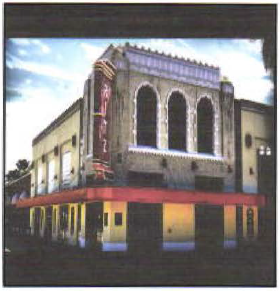 Located at 829 North Davis Street between State
and Union Streets is an African-American
oriented theatre in the LaVilla neighborhood. The
Ritz Theatre building was constructed in 1929,
designed by local architect Jefferson Powell. The
Ritz was one of LaVilla's cultural centers in the
neighborhood. Visiting and local artists working
the Chitlin Circuit performed at the Ritz.
Groundbreaking for the $4.2 million Ritz Theatre & LaVilla Museum took place in 1998.
Construction took a year, and the grand opening took place on Sept. 30, 1999. Today,
only the northwest comer of the building, including the Ritz sign, is original, but the Ritz
Theatre and La Villa Museum are once again a center of the city's cultural life. The
theatre seats 426, the museum holds 11,000 square feet of exhibits recounting local
African-American history, exhibitions of Black Artists, and "Lift Every Voice and Sing"
animated exhibition of James Weldon Johnson and J. Rosamond Johnson.
Located at 829 North Davis Street between State
and Union Streets is an African-American
oriented theatre in the LaVilla neighborhood. The
Ritz Theatre building was constructed in 1929,
designed by local architect Jefferson Powell. The
Ritz was one of LaVilla's cultural centers in the
neighborhood. Visiting and local artists working
the Chitlin Circuit performed at the Ritz.
Groundbreaking for the $4.2 million Ritz Theatre & LaVilla Museum took place in 1998.
Construction took a year, and the grand opening took place on Sept. 30, 1999. Today,
only the northwest comer of the building, including the Ritz sign, is original, but the Ritz
Theatre and La Villa Museum are once again a center of the city's cultural life. The
theatre seats 426, the museum holds 11,000 square feet of exhibits recounting local
African-American history, exhibitions of Black Artists, and "Lift Every Voice and Sing"
animated exhibition of James Weldon Johnson and J. Rosamond Johnson.
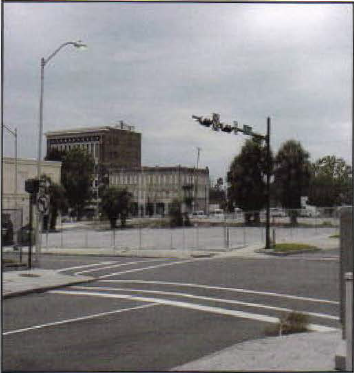 Located at 432 West Ashley and Clay
Street, Ebenezer United Methodist
Episcopal Church was founded in 1881, as
Zion Methodist Episcopal Church. Rev.
John S. Swain from the Midwest arrived
in Jacksonville, FL in 1854 is credited for
establishing the church. James Weldon
Johnson, his brother, John Rosamond,
mother, Helen Louis Dillet Johnson, and
his maternal grandmother were members. Helen was choir director, and James and John were
musicians who shared their music talents with Bethel Baptist Institutional Church. Ebenezer
church is still in existence now located at 9114 Norfolk Blvd. The choir sang hymns and
Negro Spirituals preserved in book titled, "The Books of American Negro Spirituals" by James
Weldon Johnson and J. Rosamond Johnson such as Steel Away To Jesus, and Ev'ry Time I
Feel de Spirit.
Located at 432 West Ashley and Clay
Street, Ebenezer United Methodist
Episcopal Church was founded in 1881, as
Zion Methodist Episcopal Church. Rev.
John S. Swain from the Midwest arrived
in Jacksonville, FL in 1854 is credited for
establishing the church. James Weldon
Johnson, his brother, John Rosamond,
mother, Helen Louis Dillet Johnson, and
his maternal grandmother were members. Helen was choir director, and James and John were
musicians who shared their music talents with Bethel Baptist Institutional Church. Ebenezer
church is still in existence now located at 9114 Norfolk Blvd. The choir sang hymns and
Negro Spirituals preserved in book titled, "The Books of American Negro Spirituals" by James
Weldon Johnson and J. Rosamond Johnson such as Steel Away To Jesus, and Ev'ry Time I
Feel de Spirit.
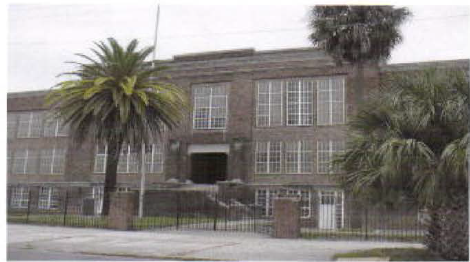 Stanton School was the only school in Jacksonville and Florida for Blacks to attend. Stanton
School organized immediately after the Civil War to foster educational opportunities for former
slaves and free Blacks, the Trustees of Florida Institute purchased a block of land in 1868 for
$850 from Ossian B. Hart, tenth governor of Florida and the son of Jacksonville founder, Isaiah
Hart. Stanton begun as an elementary school serving the African-American population under the
then-segregated education system originally opened in 1869 and named after Edwin M. Stanton,
an abolitionist and Secretary of War under President, Abraham Lincoln.
Stanton School was the only school in Jacksonville and Florida for Blacks to attend. Stanton
School organized immediately after the Civil War to foster educational opportunities for former
slaves and free Blacks, the Trustees of Florida Institute purchased a block of land in 1868 for
$850 from Ossian B. Hart, tenth governor of Florida and the son of Jacksonville founder, Isaiah
Hart. Stanton begun as an elementary school serving the African-American population under the
then-segregated education system originally opened in 1869 and named after Edwin M. Stanton,
an abolitionist and Secretary of War under President, Abraham Lincoln.
Fires destroyed the first school in 1883 and then in 1901. Three different school buildings occupied this property with the present one completed in 1917. Stanton AfricanAmerican principals were James Weldon Johnson (Stanton Alumnus), Simon P. Robinson, Isaiah A. Blocker, George M. Sampson. James N. Wilson, Floyd J. Anderson, Jesse L. Terry, Charles D. Brooks, and Benjamin Durham, Jr. Johnson served as principal from 1894 to around 1904 or 1905. he added an addi[ional grade each year unlil Stanton School became the firsr high school for African-Americans in the Stale of florida. Old Stanton High School closed in 1971. Jacksonville Urban League Head Start occupies the current building. The school was transferred and renamed New Stanton High School opened in 1953, on 1149 West 13th Street. serving 9-12 grades.
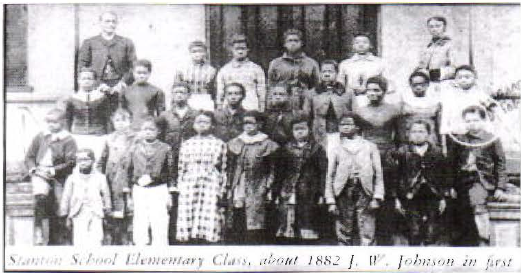
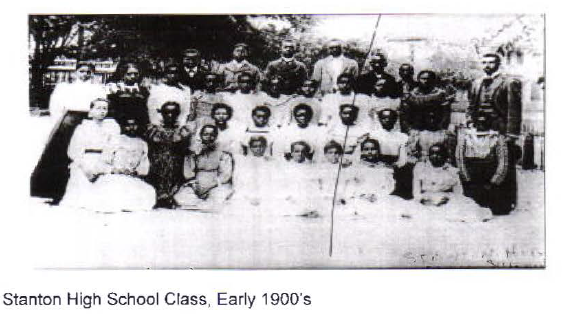
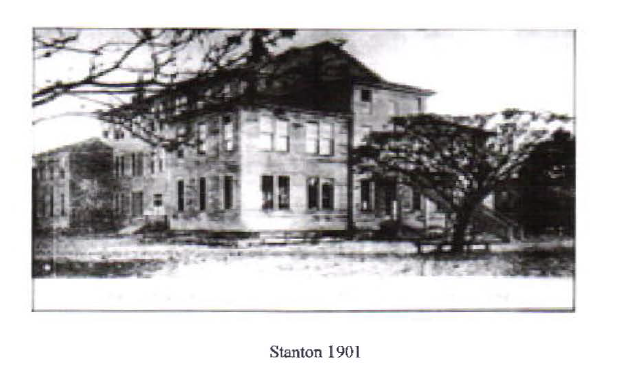
By 1915, LaVilla was a major neighborhood for African Americans. Ashley Street was the main hub of entertainment and African-American businesses. Ashley Street is known as the Harlem of the South. Famous artists and musicians performed at nightclubs and the theatres. Joe Higdon and Frank Usher were owners of the Hollywood Music Store in 1924. They brought key entertainers to LaVilla Jn 1926, Paramount recording artist, Leola B. Wilson recorded the song "Ashley Street Blues." Other famous visitors to Jacksonville were Nat King Cole, Duke Ellington, Sarah Vaughn, and Former Heavyweight Boxing Champion, Joe Lewis. Some of the people who lived in the neighborhood were Ray Charles (Robinson), legendary singer/pianist, and/composer in 1945 resided with his aunt on Church Street; Jazz Musicians, Charlie Horse, Happy Reid, Teddy Washington and Baron J. McCloud. Gospel Singers, like Ethel Davenport and The Sons of Jubilee Singer; and Harlem Renaissance singer Billy Daniels who recorded the song, That Old Black Magic; A. Phillip Randolph moved to Jacksonville in 1891, and the organizer of The Brotherhood of Sleeping Car Porters which was considered the first serious effort of unionizing the Pullman company.
Others who lived in the neighbor were Harlem Renaissance writers, Zora Neale Hurston, Folklorist, anthropologist, novelist, and short story writer; James Weldon Johnson, Harlem Renaissance Figure known as the Father of the Harlem Renaissance encouraged writers and artists to use their talents to bring about a social change in American; and John Rosamond Broadway Musical Scores composed by John Rosamond Johnson, his Brother James Weldon Johnson, joined Bob Cole in New York, and established the first Black Musical Production Company to collaborate on more than 200 songs for Broadway Show. Eartha M.M. White and her mother Clara White helped the homeless.
Businesses like the theaters: the Strand, the Air Dome, the Globe, the Frolic, and the Roosevelt Theatre. The Ritz Theatre located in the La Villa area opened in 1949. Theses theatres offered movies and variety shows for over fifty years on Ashley Street Other, African-Americans Businesses on Ashley Street included Beauty and Barber Shops such as the Eutopia Beauty Shop, the Roosevelt Barber, established in 1946, and still located in the Clara White Mission building. Ashley Street was the major street in La Villa overflowing with storefront Black businesses, like the Cute Rite Pharmacy and Hayes Luncheonette. The 700 block of Ashley Street is where you could find several large halls like the Knights of the Pythias Hall, Odd Fellow, Parkers Hall. Boarding rooms, hotels, and a string of storefront Black businesses. Ashley Street was the gathering place for African-American to pass rime.
The Masonic Temple Building was a business center that housed Black lawyers, doctors, and fraternal members. James Weldon Johnson and his wife, Grace traveled from New York to Jacksonville boarded at the Masonic Temple Building. Many of the African-American historic treasures in Lhe heart of the city in La Villa were loss under Mayor Ed Austin's River City Renaissance plan was adopted by the Jacksonville City Council in 1993.
5. Site of Birthplace of James Weldon Johnson (Northwest Corner of Lee and Houston Streets)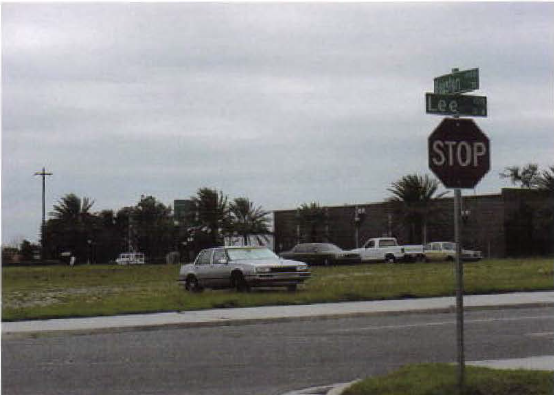
After arriving from Nassau in the Bahamas in 1869, James Jolmson purchased a large lot with a four or five-room framed house at the northwest corner of Lee Street (Third Street), and Houston Street (Ward Street) in the Town of La Villa. It was in this that James Weldon Johnson was born on June 17, 1871. It was on this site in 1899, but in a new home his father had built earlier, that Johnson collaborated with his brother John Rosamond Johnson, to produce the famous piece, Lift Every Voice and Sing, now recognized as the Negro National Anthem. The piece was produced to be part of a community celebrating in honor of Abraham Lincoln's Birthday on February 12th. Reportedly, the Johnson brothers had the song first performed by a chorus of five-hundred schoolchildren in JacksonviJle. Where this historic performance took place has never been determined, although it has been speculated to have occurred at several possible sites including Old Stanton High School, Ebenezer United Methodist Church, Bethel Baptist Institutional Church, and the Florida Baptist Academy.
6. Old Union Terminal (1034 West Bay Street) (Convention Center)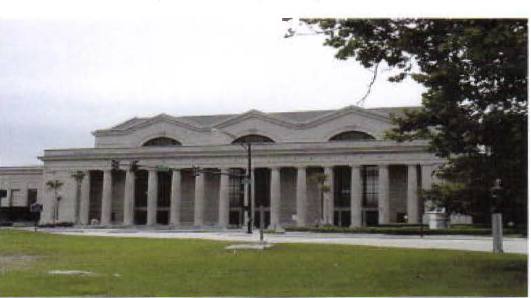
As a teenager and young adult, James Weldon Johnson made many train trips from and to his home in Jacksonville, first to attend school in Atlanta, and later seasonal trips to join his brother Rosamond in New York City. In his autobiography, Along This Way, Johnson used these trips to observe, experience, and comment on changing racial attitude in the south regarding public transportation. For example in 1896 on one of his trips back to Jacksonville, Johnson boarded a first class car out of Charleston, South Carolina, however, when the train crossed into Georgia, he was instructed by the conductor to relocate to the segregated "Jim Crow car" since that state had outlawed whites and Blacks riding in the same railroad car. Ironically, a white sheriff and his criminally insane prisoner who was also white occupied the segregated car. Johnson commented on the apparent contradiction in the law, thus forcing the conductor to relocate the sheriff and the prisoner to the first class car much to the displeasure of other passengers.
7. Site of Shiloh Metropolitan Baptist Church (115 Davis Street, today located at 1118 West Beaver Street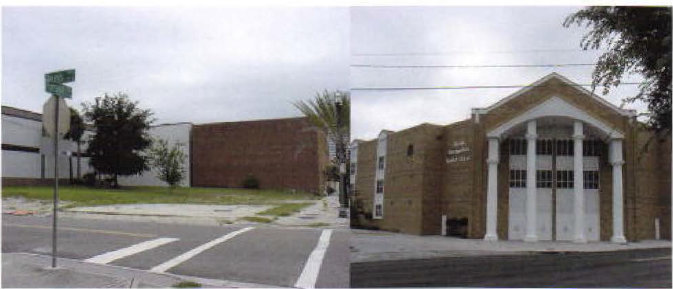
Now one of the largest Baptist Churches in Jacksonville, Shiloh Metropolitan Baptist Church, which organized in 1875, moved into a small wooden building in LaVilla around 1885. James Johnson, the father of James Weldon Johnson, served as minister of this small congregation on Davis Street from 1881 until the late 1890's. Being located in the notorious "red light district" of Jacksonville, Reverend Johnson was one of the few ministers willing to serve the spiritual needs of sick and dying prostitutes in the adjacent houses.
8. Site of St. Johns Episcopal (Northeast Corner of Church & East Duval Streets)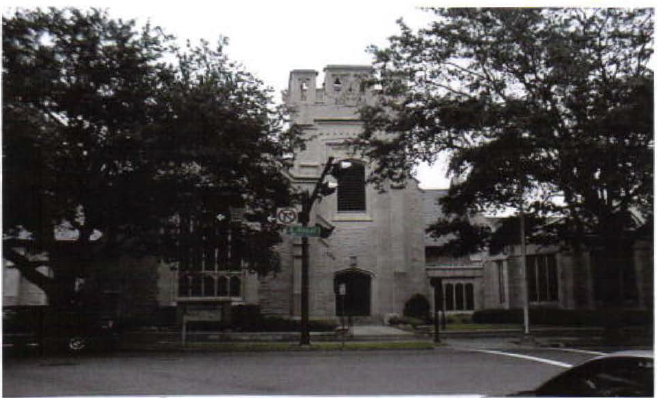
Today recognized and respected as one of Jacksonville's most significant churches, St. Johns Episcopal Church was during a very different time to provide Helen Louis Johnson with a memorable experience in how social relations in the racially tolerant Bahamas different from the increasingly segregated south of the last quarter of the nineteen century. Having been previously a member of the Christ Church Cathedral, Johnson's mother quite innocently attended a worship service at the local Episcopal Church where she made her presence known by her beautiful soprano voice. After the services, Helen Louise Johnson was politely but clearly informed that she should worship elsewhere. After this incident, Helen Louise never returned to the church and joined her mother Mary Barton, at Ebenezer United Methodist Episcopal Church.
9. Site of the St. James Hotel (117 West Duval Street)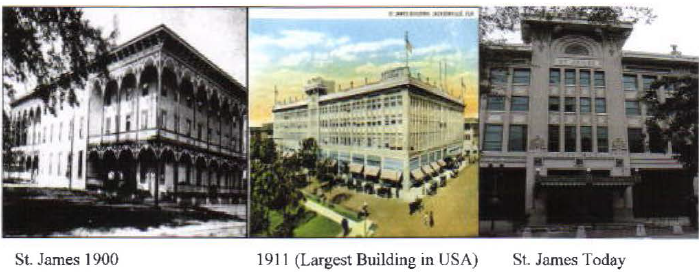
Now occupied by the magnificent St. James Building, built in 1911-12 to house the Cohen Brothers' Department Store from a design by noted Jacksonville Architect, Henry John Klutho, this site was once home to elaborate St. James Hotel. Built in 1869 and expanded over the years to six stories, the rambling wood framed St James hotel was the major destination for the thousands of northern and Midwest tourists that flooded Jacksonville during the winter months. Because of his previous experience in the hospitality business in Nassau, James Johnson rose to the prominent position of headwaiter at the St. James Hotel. A frequent visitor to the hotel during the busy tourist season, a very young James Weldon Johnson, awed by his father's responsibilities as headwaiter, believed his family actual owned the place.